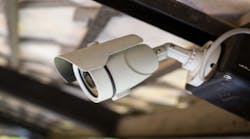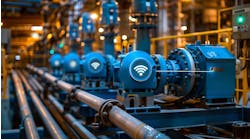A new view on operations: How video integration augments analytics & IIoT
With staffing shortages brought on by the COVID-19 pandemic, many companies have ratcheted up automation programs to help offset declines in production and productivity—and insulate against future crises.
While there’s tremendous potential for these technologies to revolutionize efficiency, the problem is that they only give us a retrospective view. We know from analyzing the data from sensors that production has slowed, or a product is off-spec. But this data can’t tell us how or why. We see the result but not what caused the problem.
Augmenting analytics and IIoT with video integration can provide an entirely new view on operations, one that provides insight into not just what happened but also why or how. With visual evidence we can work faster to solve the problem—or prevent it from happening in the first place. And it can be as simple as installing an off-the-shelf GoPro camera at key points—a relatively small investment that can pay big dividends.
Here are three ways integrating video into your analytics and IIoT deployments can provide deeper insight and better ROI.
Gain clarity around IIoT data. Installing sensors on equipment to detect faults, failures and other issues is a smart way to analyze production and optimize machine performance. But when issues happen, IIoT data often can’t tell you why or how to fix it—they only show you want happened as a result.
Integrating video surveillance along with your IIoT data can provide more insight and root-cause analysis. For example, if a machine jams, sensors will alert operators to the problem, and they can then review the footage to see exactly what went wrong just prior to the jam to troubleshoot the issue. This can drastically reduce troubleshooting time and enable operators or service personnel to take steps to correct the problem to prevent future occurrences.
More advanced setups that include artificial intelligence (AI) technology can even make automatic adjustments to correct the problem autonomously. For example, if the containers of sour cream are coming out of the fill station out-of-balance, causing faults at the sealing unit, IIoT and video analysis can detect that the fill nozzle is off center, and AI can adjust it in real-time to correct the problem.
Enhance productivity with task performance monitoring. No one wants to have someone breathing down their neck, watching their every move. But sometimes, monitoring staff performance can be very revealing when it comes to identifying productivity bottlenecks. Of course, with the current staff shortages plaguing the manufacturing industry, there’s no one available to keep watch anyway.
Video capture and video analysis can provide a more efficient, evidence-based method for performance monitoring. With video footage, you can spot what’s causing the issues that IIoT reveals. For example, maybe an employee is fumbling with loading a machine quickly because of a poor design or skipping steps that cause non-compliance faults further down the line. Video footage not only helps to detect employee performance and process issues without having someone watching over their shoulder, but it also provides irrefutable evidence of performance gaps, eliminating any potential conflicts.
Accelerate training and onboarding. Training can be another resource-intensive activity that requires an experienced operator to spend time with newcomers, thus taking away them away from production duties. With digital training technologies becoming widely available and accessible, video capture can be extremely helpful in getting trainees up to speed faster.
Since you’re already capturing task-completion footage, leverage those segments that demonstrate optimal performance to create a standard of work, documenting the exact procedure. Then, include these clips in online training modules that employees can access from anywhere, even on their own time.
If you’re keen on implementing AI into the system, you could install video monitors at workstations to replay standard-of-work footage as needed, or even on demand, if the system detects hesitation or a slowdown at a certain step in the process, which suggests the employee is unsure of what to do next.
Implementing video capture as part of an IIoT and process-analytics strategy is a smart way to minimize or optimize human-resource utilization, improve production efficiency and accelerate workforce productivity. Simply installing a few relatively inexpensive cameras can deliver substantial ROI, making this a worthwhile investment to get a bigger bang for your buck from existing technology investments.
By Wes Turner, senior management consultant with Dploy Solutions and TBM Consulting



